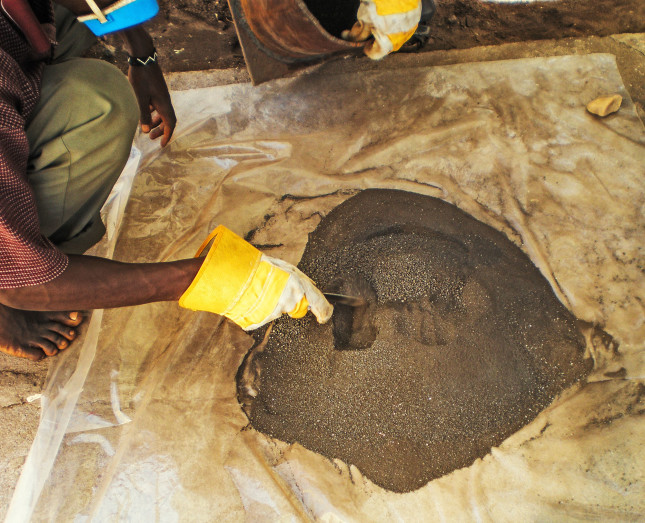-
Many Companies Struggle to Comply with Conflict Mineral Reporting Rules
September 25, 2020 By Cindy Zhou
“The exploitation of the mining and trade of conflict minerals in the eastern DRC [Democratic Republic of the Congo] has contributed to instability, violence, displacement of people, and severe human rights abuses,” says the Government Accountability Office (GAO) in its annual report, Conflict Minerals: Actions Needed to Assess Progress Addressing Armed Groups’ Exploitation of Minerals. The report examines a sample of filings from 1,083 companies that submitted conflict mineral disclosures required by the Securities and Exchange Commission (SEC) in 2019.
According to the GAO, about half of companies that performed initial research in 2019 were able to determine where their conflict minerals came from, echoing findings in 2017 and 2018. However, the number of companies that filed conflict mineral disclosures decreased from the previous two years. In addition, only about 17 percent of companies that exercised due diligence, involving a deeper level of supply chain research, found that their minerals originated from the DRC and surrounding countries in 2019—versus 37 percent and 35 percent in 2017 and 2018, respectively. The SEC staff, the GAO reports, could not explain what was behind this decrease.
Under the 2010 Dodd-Frank Wall Street Reform and Consumer Protection Act, the State Department, the U.S. Agency for International Development (USAID), and the SEC must take measures to promote peace and security. In 2011, with the help of USAID, the State Department created the U.S. conflict minerals strategy to tackle conflict mineral exploitation by armed groups. In 2012, the SEC declared a disclosure rule requiring companies to report on their efforts to determine the origins of their conflict minerals. The Dodd-Frank Act also requires the GAO to assess the effectiveness of the SEC regulations each year.
The SEC’s 2012 rule applies to companies publicly traded in the United States that use gold, tin, tantalum, or tungsten—known as the four conflict minerals—from the DRC and surrounding countries. First, companies must make a preliminary determination on whether their minerals come from the DRC or surrounding countries as opposed to scrap or recycled sources. Then, if there is reason to believe that their minerals originate from the DRC or surrounding countries, companies must exercise due diligence to find their source and chain of custody.
The report also assesses the effectiveness of action taken by the U.S. Department of State and USAID to implement the 2011 U.S. conflict minerals strategy, which aims to promote peace and security in the DRC. The GAO recommends that the State Department work with USAID to establish performance indicators to better track progress towards the strategy’s objectives.
Over the past decades, conflict minerals have become lucrative sources of funding for armed groups, fueling some of the deadliest global conflicts since World War II. Armed groups and army commanders in the eastern DRC exploit mineral trade and mining, including by imposing taxes on mineral trade routes and profiting from smuggling. This business has financed a two-decade war in the region that has led to severe human rights violations and internally displaced millions.
Tracking the source countries of conflict minerals is not an easy task. Companies still face challenges in determining the countries of origin of their conflict minerals. Many are several layers removed from their suppliers and the original mines, with one company reporting in its 2019 filing that it had about 1,000 suppliers.
Comprehensive guidance from government agencies and the development of conflict mineral data collection software can help to better record and trace activity throughout the supply chain. Increased global coordination could also strengthen the effectiveness of regulations: outside the United States, the Organisation for Economic Co-operation and Development produced a due diligence guidance for responsible mineral supply chains, and a new conflict minerals regulation will take effect in the European Union in 2021.
International demand for cell phones, jewelry, and even renewable energy drives the continued trade of conflict minerals required to produce them. For example, tungsten is used in the manufacture of automobiles and is the main element in light bulb filaments, while tantalum is used to enable energy storage in cell phones and other electronic devices.
Meanwhile, the mining sector is a significant source of jobs in countries like the DRC, and any drastic change in the local economy could bring about further instability, including increased smuggling and other illegal mining activities. Thus, conflict mineral regulations should be accompanied by provisions to support the livelihoods of mining communities. While complete removal from conflict zones may not be realizable, such efforts may promote more transparent management of mineral supply chains that does not tolerate human rights abuses.
Read More:
- How can we use cobalt in the renewable energy transition while minimizing its social and environmental cost?
- Efforts to bring fair trade to ‘artisanal’ gold mining face market realities.
- As U.S.-China competition rises over key resource suppliers, climate change is redefining natural resource security.
- To overcome Africa’s resource curse, better governance is needed.
Sources: CBS News, Earthworks, Enough Project, European Commission, Global Witness, Government Accountability Office, iPoint, Organisation for Economic Co-operation, Securities and Exchange Commission, The Guardian.
Photo Credit: Finely ground Coltan ore that is widely used in most modern technology, Shutterstock.com, All Rights Reserved.
 A Publication of the Stimson Center.
A Publication of the Stimson Center.



